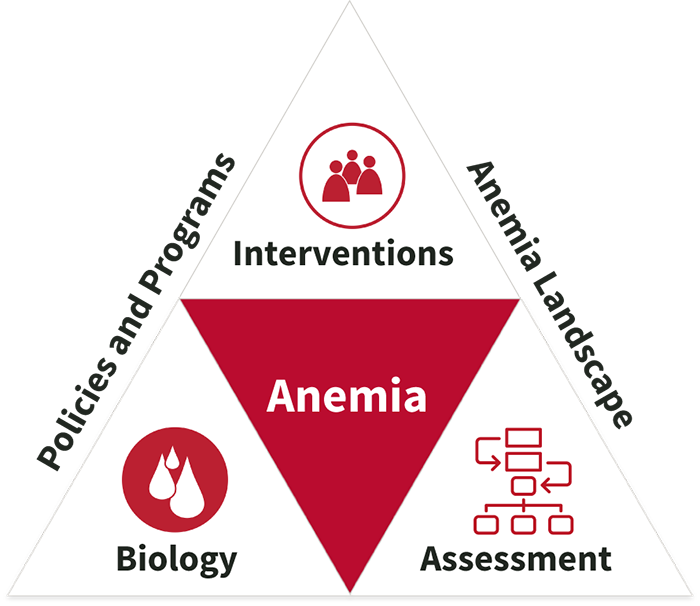Experiences from different parts of the world show that an approach that succeeds in one context may not be applicable to others. Sharing these experiences allows us to learn from one another, and refine our actions and interventions to match our own geographical and resource environments.
We found 80 resource(s)
The Effect of Iron Dosing Schedules on Plasma Hepcidin and Iron Absorption in Kenyan Infants
Journal Article published by Am J Clin Nutr in
This study assessed iron uptake in infants in Kenya who received three different regimens of iron supplementations via stable iron isotopes. The authors report that 12 mg doses of ferrous sulfate given in fortified meals as either morning or afternoon doses resulted in comparable absorption, while dosing of the same form of iron on consecutive…
The Co-Occurrence of Overweight and Micronutrient Deficiencies or Anemia Among Women of Reproductive Age In Malawi
Journal Article published by Journal of Nutrition in
Using data from nonpregnant women aged 15–49 years in the 2015–2016 Malawi Micronutrient Survey, this paper described the prevalence of double burden pf malnutrition (overweight and obesity, and anemia) among Malawian women
Combined IYCF with Small-Quantity Lipid-Based Nutrient Supplementation is Associated with a Reduction in Anemia but No Changes in Anthropometric Status of Young Children from Katanga Province of the DRC: A Quasi-Experimental Effectiveness Study
Journal Article published by Am J Clin Nutr in
This study evaluates the impact of an infant and young child feeding intervention (with small-quantity lipid-based nutrient supplements) on anemia and growth in children aged 6–18 months in the Democratic Republic of Congo.
Development and Rollout of National Maternal Anemia Materials: Experience from Mozambique
Brief published by Maternal and Child Survival Program in
This brief describes the Maternal and Child Survival Program's experience in partnering with Mozambique's Ministry of Health in developing national anemia behavior change communication materials, and using them in the health system.
Anemia in Bolivian Children: A Comparative Analysis Among Three Regions of Different Altitudes
Journal Article published by Ann N Y Acad Sci in
This paper analyzes four population-based demographic and health surveys conducted in Bolivia between 1998 and 2016 to understand trends in anemia in children from 6 to 59 months of age by selected sociodemographic characteristics and three categories of altitude: low, medium, and high.
Development and Rollout of National Maternal Anemia Materials: Experience from Mozambique
Information, Education and Communication Materials published by Maternal and Child Survival Program in
This case study describes the process of development of social and behavior change resources for the program to to reduce iron deficiency anemia in women in Mozambique
Understanding the Process of Strengthening Multi-Sectoral Efforts for Anemia Reduction: Qualitative Findings from Sierra Leone and Uganda
Journal Article published by Int J Health Plann Manage in
This paper presents key findings and lessons learned from Sierra Leone and Uganda's experiences establishing national-level anemia coordination platforms
Multi-Sectoral Anemia Efforts at the National Level in Uganda
Technical Report published by SPRING in
This process documentation identifies the successes and challenges of establishing a multi-sectoral anemia platform in Uganda, analyzes the key factors that led to outcomes, and identifies potential areas for making improvements to the process in terms of sustainability of efforts. This process documentation uses data from two rounds of semi-…



